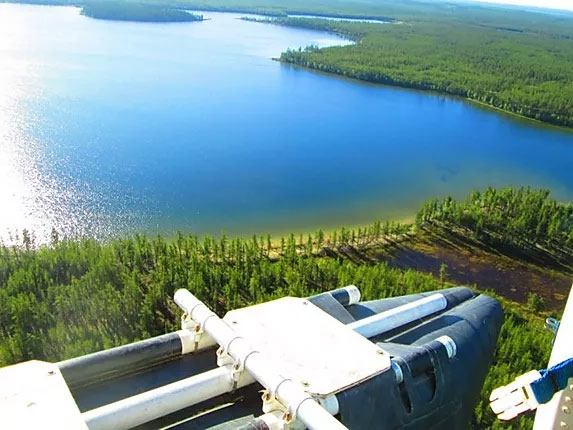Dixie outlines plans at Preston Uranium Project

Dixie Gold Inc. [DG-TSXV] said the 2020 exploration program at its Preston Uranium Project in Saskatchewan is now under way.
The Preston project is located in the Western Athabasca Basin near Fission Uranium Corp.‘s [FCU-TSX; FCUUF-OTCQX; 2FU-FSE] Triple R deposit, and NexGen Energy Ltd.‘s [NXE-TSX; NYSE American] high-grade Arrow deposit. Dixie Gold’s partner on the project is Orano Canada Inc. (previously AREVA Resources Canada Inc.).
“Dixie Gold is pleased to have industry-leader Orano Canada moving our Preston Uranium Project forward with their expertise and resources,” the company said in a press release. “The current geophysics and ground program is designed to help refine future drill targets.”
Under an agreement with Dixie and Skyharbour Resources Ltd. [SYH-TSXV; SYHBF-OTC], Orano can earn a 70% project interest by spending up to $8 million over six years. The deal was announced on March 9, 2017.
Orano’s exploration program on the Preston Uranium Project will consist of DC resistivity ground geophysics on the JL and Canoe grids and the B conductive area. To date, exploration at Preston has consisted of a traditional approach of defining conductors via ground EM surveys and diamond drilling.
The objective of this $735,000 exploration program is to use the DC resistivity method to further characterize the EM conductors by providing information about possible clay, silicification or associated alteration in the vicinity of conductors, adding another layer of information to prioritize areas to be drill tested. Historical geophysical lines will be utilized at the JL and Canoe grids, and 15.9 km of line cutting will be carried out at the B conductive area.
Previous diamond drilling on the property has intersected numerous and extensive, well developed and commonly graphitic ductile shear zones that were clearly reactivated over time. These structures correlate with elongated NNE-trending magnetic lineaments.
A later brittle event is common on both drill core and the magnetic data and could provide a locus for mineralizing fluids. The shear zones are commonly altered and locally metal enriched (pyrite-pyrrhotite-chalcopyrite). The basement rocks intersected are complexly deformed supracrustal rocks; largely graphitic orthogneiss with minor paragneiss, intruded by Archean granitoids.
The company said these lithologies are common to the proven uranium mineralization in the Western Athabasca region (She Creek and Patterson Lake corridor deposits).
The Athabasca Basin in northern Saskatchewan is host to the world’s richest uranium deposits. The two dozen or so known uranium deposits in the basin have grades averaging 3% U3O8 and those in production provide upwards of 20% of the global supply of uranium.
Uranium mineralization in the area where Dixie is exploring, including the Triple R and Arrow, has a number of similarities to the high-grade uranium deposits in the eastern part of the Athabasca Basin like those at the Cigar Lake and McArthur River mines.
On Tuesday March 10 Dixie Gold shares eased 4.2% or $0.005 to 11.5 cents. The shares are currently trading in a 52-week range of $0.08 and 24 cents.
